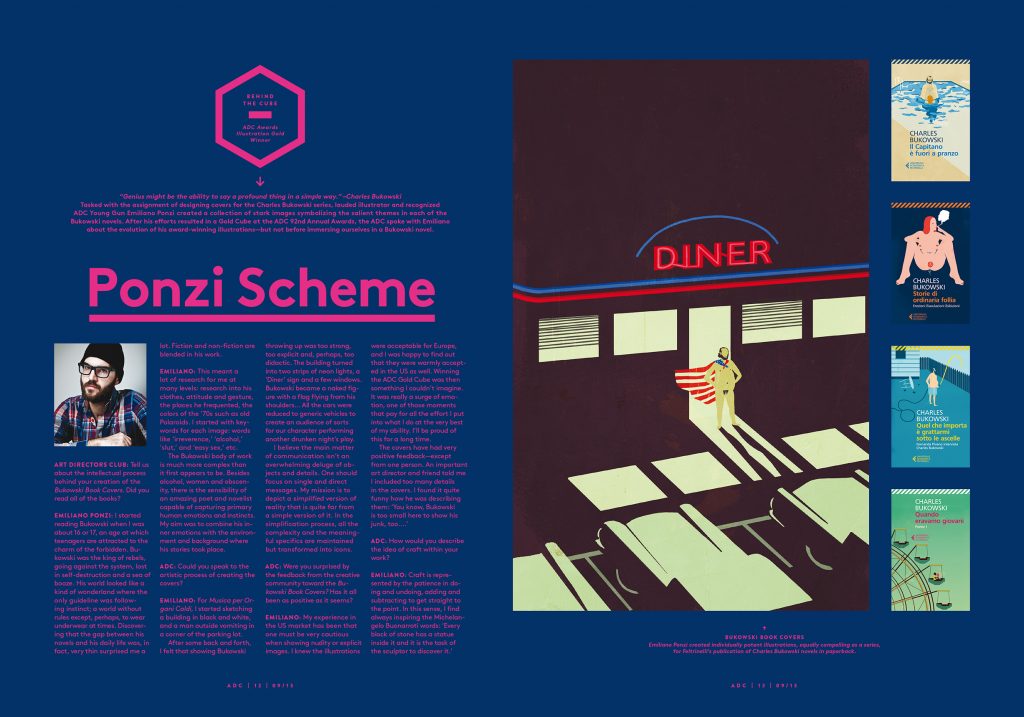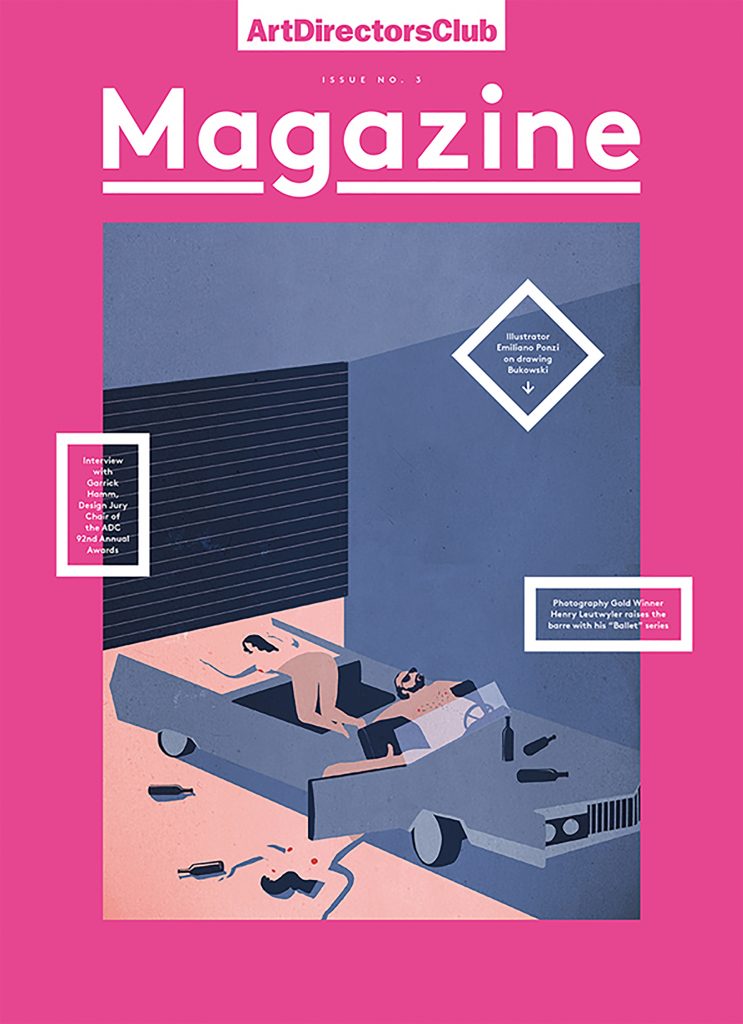ADC New York Magazine interview

PONZI SCHEME
ART DIRECTORS CLUB: Tell us about the intellectual process behind your creation of the Bukowski Book Covers. Did you read all of the books?
EMILIANO PONZI: I started reading Bukowski when I was about 16 or 17, an age at which teenagers are attracted to the charm of the forbidden. Bu- kowski was the king of rebels, going against the system, lost in self-destruction and a sea of booze. His world looked like a kind of wonderland where the only guideline was follow-
ing instinct; a world without rules except, perhaps, to wear underwear at times. Discover- ing that the gap between his novels and his daily life was, in fact, very thin surprised me a
lot. Fiction and non-fiction are blended in his work.
EMILIANO: This meant a
lot of research for me at many levels: research into his clothes, attitude and gesture, the places he frequented, the colors of the ’70s such as old Polaroids. I started with key- words for each image: words like ‘irreverence,’ ‘alcohol,’ ‘slut,’ and ‘easy sex,’ etc.
The Bukowski body of work is much more complex than
it first appears to be. Besides alcohol, women and obscen- ity, there is the sensibility of an amazing poet and novelist capable of capturing primary human emotions and instincts. My aim was to combine his in- ner emotions with the environ- ment and background where his stories took place.
ADC: Could you speak to the artistic process of creating the covers?
EMILIANO: For Musica per Or- gani Caldi, I started sketching a building in black and white, and a man outside vomiting in a corner of the parking lot.
After some back and forth, I felt that showing Bukowski
throwing up was too strong, too explicit and, perhaps, too didactic. The building turned into two strips of neon lights, a ‘Diner’ sign and a few windows. Bukowski became a naked fig- ure with a flag flying from his shoulders… All the cars were reduced to generic vehicles to create an audience of sorts
for our character performing another drunken night’s play. I believe the main matter
of communication isn’t an overwhelming deluge of ob- jects and details. One should focus on single and direct messages. My mission is to depict a simplified version of reality that is quite far from a simple version of it. In the simplification process, all the complexity and the meaning- ful specifics are maintained but transformed into icons.
A D C : Were you surprised by the feedback from the creative community toward the Bu- kowski Book Covers? Has it all been as positive as it seems?
EMILIANO: My experience in the US market has been that one must be very cautious when showing nudity or explicit images. I knew the illustrations
were acceptable for Europe, and I was happy to find out that they were warmly accept- ed in the US as well. Winning the ADC Gold Cube was then something I couldn’t imagine. It was really a surge of emo- tion, one of those moments that pay for all the effort I put into what I do at the very best of my ability. I’ll be proud of this for a long time.
The covers have had very positive feedback—except from one person. An important art director and friend told me I included too many details
in the covers. I found it quite funny how he was describing them: ‘You know, Bukowski
is too small here to show his junk, too….’
ADC: How would you describe the idea of craft within your work?
EMILIANO: Craft is repre- sented by the patience in do- ing and undoing, adding and subtracting to get straight to the point. In this sense, I find always inspiring the Michelangelo Buonarroti words: ‘Every block of stone has a statue inside it and it is the task of the sculptor to discover it.’
